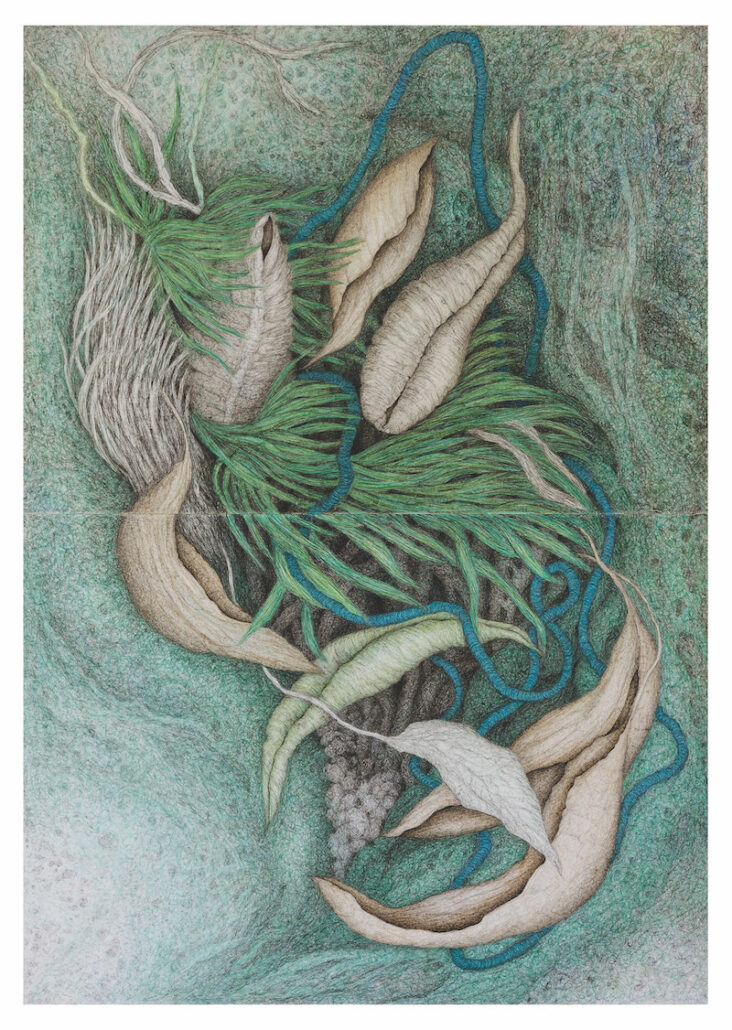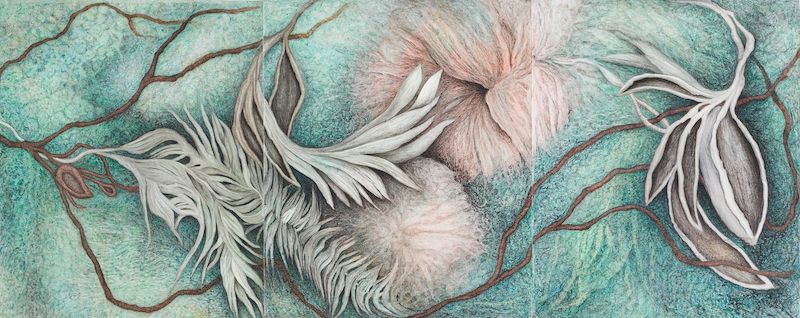“It is said”, states Melbourne-based artist Alison Russell, “that creativity is a combination of the subconscious mind and intuition”. This is a notion that compliments Russell’s practice, which seeks to generate verdant internal landscapes through a highly meditative and instinctual process.
Curious vines twist amongst curled leaves and mycelium, with bushes and fronds growing out of one another. Mysterious growths of pink, blue and green emerge from the vaguely defined boscage or rough stretches of algae. “Ambiguous botanical worlds dominate my imagery”, she continues, “no doubt a result of my fascination with patterns, textures, and life forms in the natural world”. However, this imagery is not based on any direct observation of the natural environment or reference imagery. Instead, this complex, animate landscape emerges slowly from her psyche to take physical form.
Russell begins with random mark-making and spontaneous application of pen to paper, often rotating her surface throughout the process to negate any sense of coherent perspective. These lines then turn into patterns of otherworldly foliage drawn from the artist’s subconscious. Usually formed into diptychs or triptychs, the physical format and sheer size of these complex pieces conveys a sense of monumentalism upon these visions. Both landscape and mindscape, Russell’s works revel in the beauty of the natural world as filtered through the mind of the artist.
Above: Alison Russell, Drifted One, 2021. Graphite, wax pastel and coloured pencil on Yupo paper, 65 x 230cm. Courtesy: the artist.

Alison Russell, Drifted Eight, 2022. Graphite, wax pastel and coloured pencil on Yupo paper, 130 x 90cm. Courtesy: the artist.

